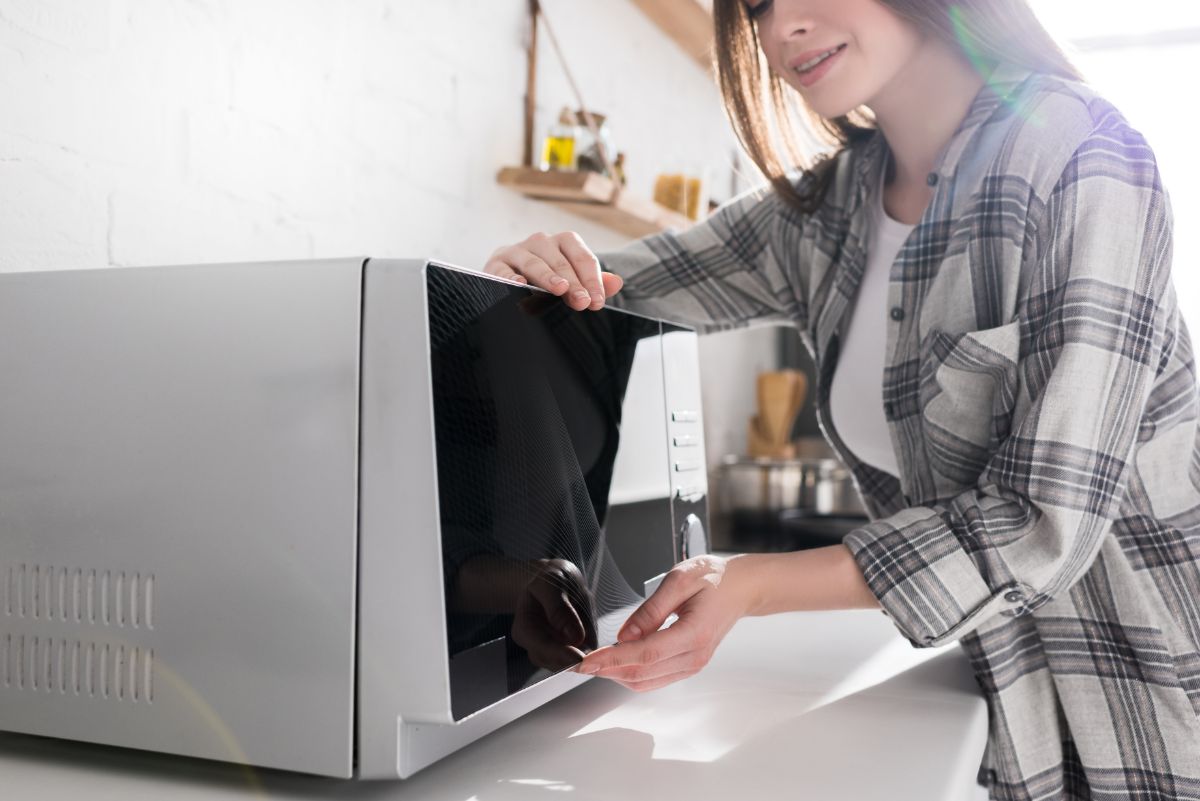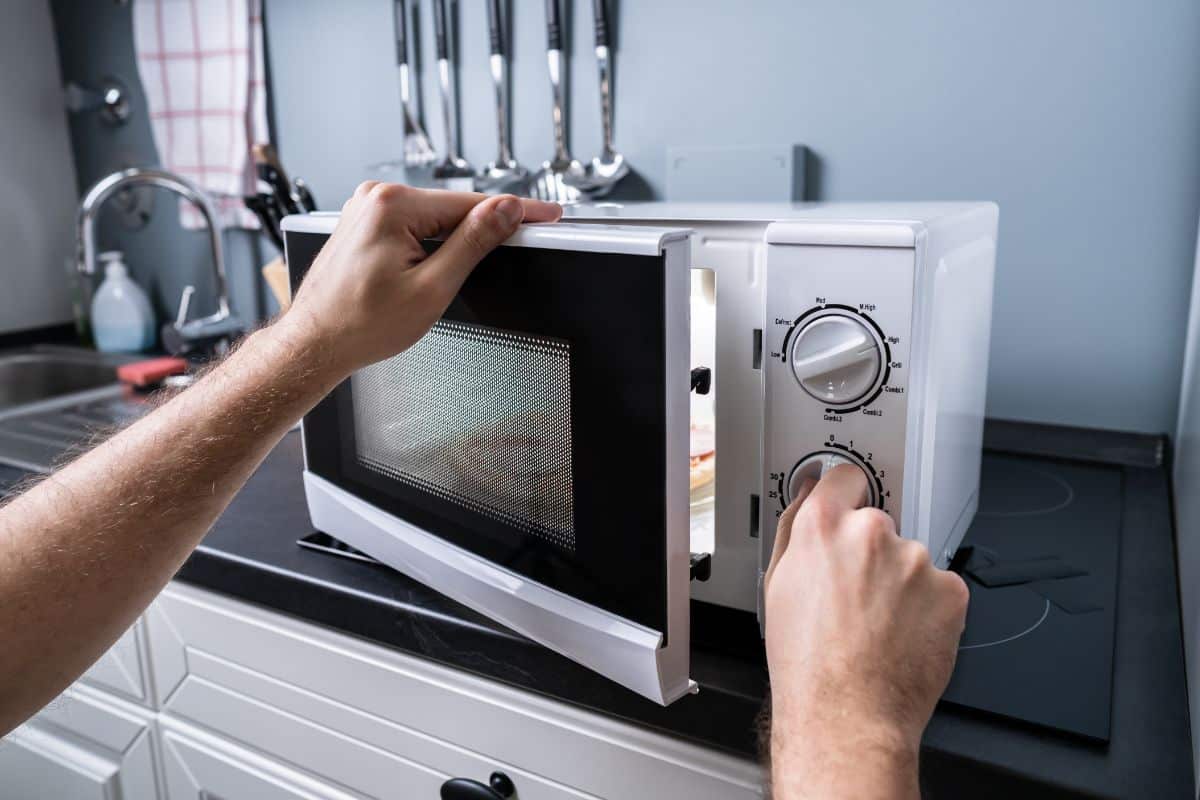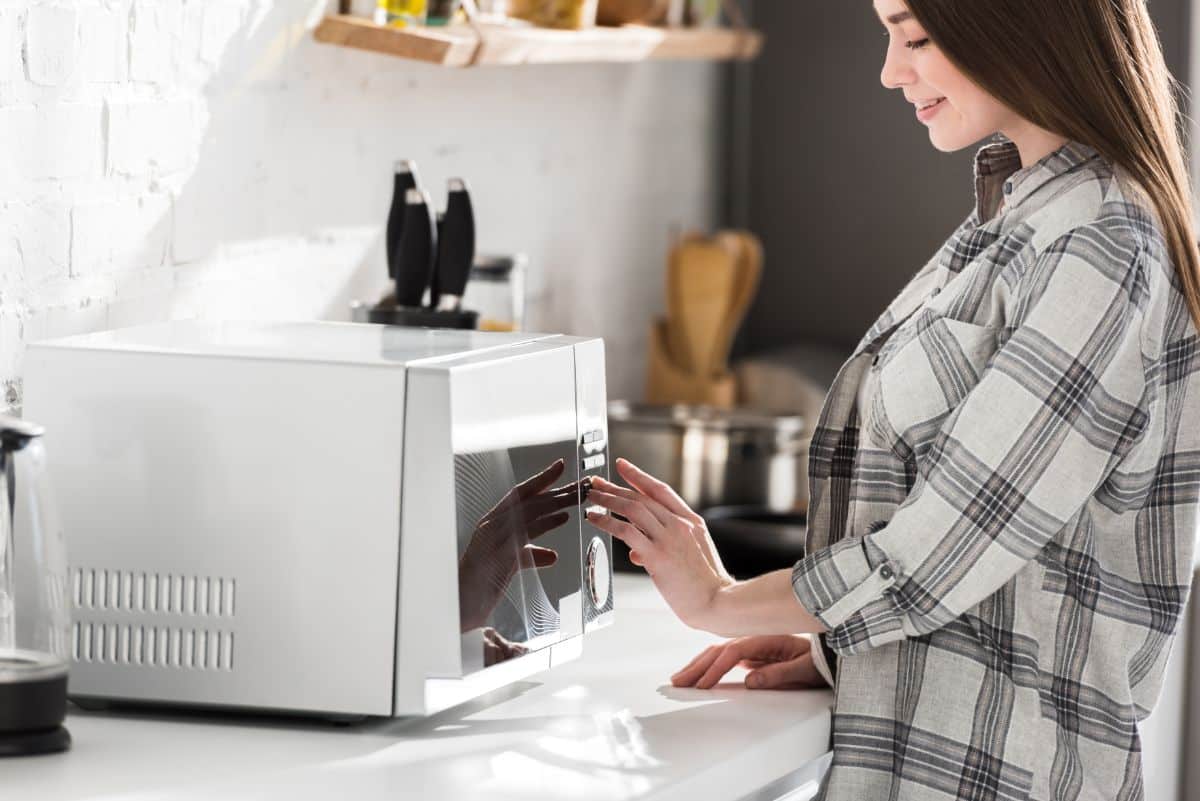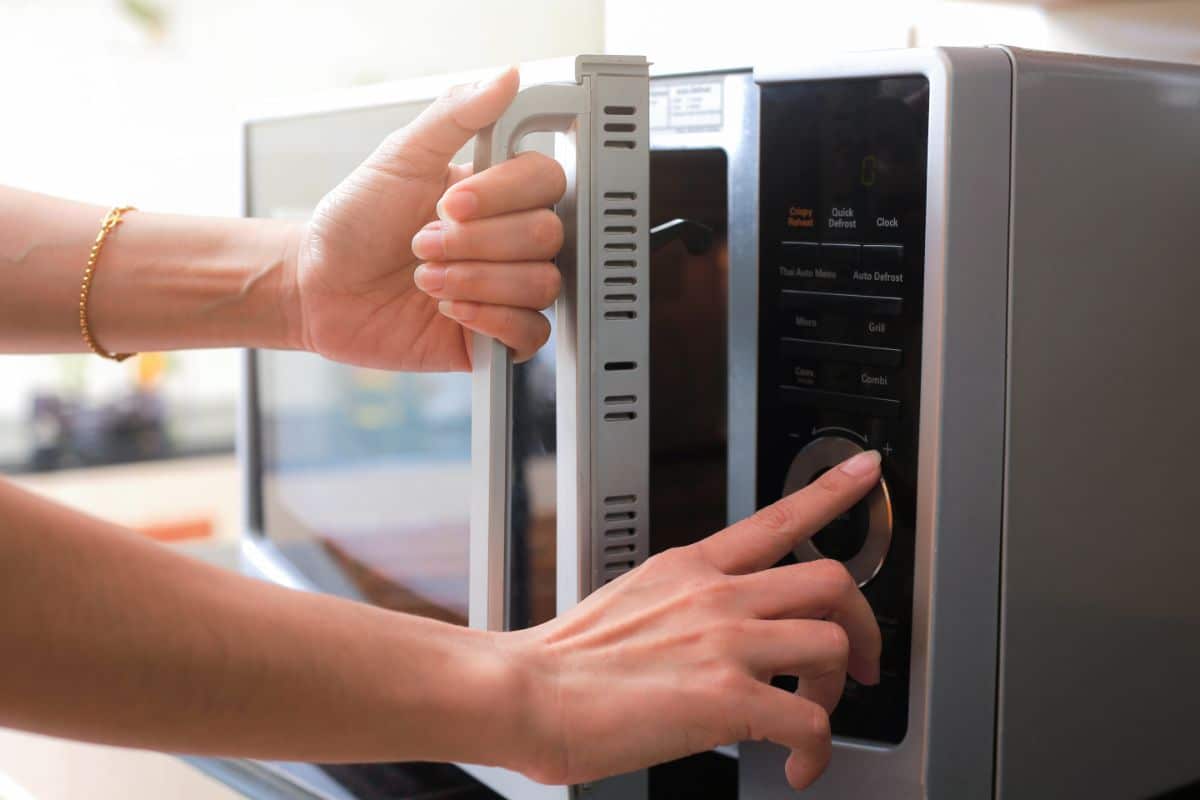Over 90 percent of all US households have at least one microwave. Add to that businesses, offices, and dorm rooms with at least one, and the microwave is more prevalent than almost any other equipment besides televisions.

Like the television, there are many interesting facts about this fascinating cooking tool. Here are nine of them.
Jump to:
- 1. The Microwave Was Discovered by Accident
- 2. The Microwave Was Not Meant for Your Kitchen
- 3. Microwaves Cook Outside-In
- 4. Microwaves Use Friction To Cook Food
- 5. Microwaves Will Not Kill You
- 6. Microwaves Are Everywhere
- 7. Your Microwave Cannot Cook Everything
- 8. Microwaves Have Two Powerful Magnets Worth Salvaging
- 9. Fats and Sugar Cook Slower
- Final Thoughts
1. The Microwave Was Discovered by Accident
An engineer named Percy Spencer discovered that a candy bar in his shirt pocket melted when he was close to a magnetron. Percy noticed it, and his melted candy bar prompted him to experiment with other foods. After trying the magnetron on several different foods, Percy concluded that microwaves cooked food.
Percy never saw exactly how life-changing the microwave technology he discovered would be for just about everyone. He died in 1970. His cause of death is not listed, which has prompted the conspiracy wing of the internet to surmise he died because of the microwaves he was exposed to when trying out his accidental find. There is zero proof that is how he died.
2. The Microwave Was Not Meant for Your Kitchen

Virtually everyone takes it for granted, but the microwave was not intended for use in everyday homes, at least at first. Restaurant and catering organizations used them at first because food could be precooked and then heated when needed, saving time. Your heating up a pizza pocket or making microwave popcorn was not on anyone's mind.
There are two reasons for this. First, the original microwaves were huge. The smallest were multiple times the size of a standard kitchen microwave today. Second, microwaves were expensive. The average family could not afford a microwave or justify the expense. A restaurant or catering business could if the organization heated enough plates of food.
3. Microwaves Cook Outside-In
Many people think microwaves cook from the inside outward, which is a misconception. Microwaves, like any other ovens, cook the surface, and the inside of food is heated via conduction. The US federal government Food and Drug Agency has spent a lot of time combating the notion that microwaves cook from the center of food, radiating outwards.
4. Microwaves Use Friction To Cook Food

When you heat food in your microwave, the microwave prompts the food's molecules to become active and bump into each other. When molecules bump into each other, they create energy, which in this case, converts into heat. Eventually, if you run the microwave long enough, the heat will become so intense it will cook the food.
While it is being cooked directly by microwaves, the microwave is also bouncing waves off the metal box in the inner chamber of the unit. The microwaves bounce off of that and eventually hit the food. This way, your food is heated evenly and by immersion in microwaves.
This method of cooking has its drawbacks. One is that food heats incredibly quickly, leading to overcooking and burning. Another drawback is that food dries as it is cooked using microwaves. To combat this, the cook must use alternative methods of hydration.
5. Microwaves Will Not Kill You
The myth is slowly disappearing, but for decades many people thought microwaves were dangerous and could even kill you. The misconception led anyone over 40 to hear, at least once, a warning from a parent or grandparent to "don't stand in front of the microwave." At the heart of the rumor is the notion that the radiation microwaves cause will cause cancer.
There are two reasons this myth is exactly that:
First, the glass door on the microwave protects you from any rays the microwave produces. The window is thick and vacuumed, and the door seals the unit completely.
Second, the waves produced by the microwave are incredibly weak, from the standpoint of contributing to cancer. You would have to stand in front of the microwave for a very long time, continuously, to increase the possibility of your exposure leading to cancer. Plus, there is the fact that the rays are kept in the microwave by the door, so the seal would have to be broken.
6. Microwaves Are Everywhere

It is good that microwaves do not cause cancer in normal exposure doses because if they did, everyone would have cancer or be dying of it. Cancer and death-by-microwave would be common because, whether you know it or not, microwaves are all around you.
Here are just a few items that send out microwaves to help us manage our daily lives:
- Airplanes
- Cable Television
- Remote Control Units
- Radios
- Satellite Television
- Cell phones
- Cell phone towers
The key to figuring out if something is sending microwaves your way is whether it uses some form of remote technology. Microwaves cooking your food is a remote technology as much as anything on the list above. The key difference is that we do not think of our cell phones using microwaves, whereas microwave ovens use microwaves for cooking our food. It is in the name.
7. Your Microwave Cannot Cook Everything
Microwaves cook so many foods that many assume a microwave oven can cook all foods. Microwaves cannot cook all foods, though. There are foods you do not want to cook in a microwave and foods you should never cook in the microwave. Here is a short list:
- Larger foods requiring a high internal temperature (no cooking whole turkeys in your microwave)
- Grapes
- Food with no water
- Leafy vegetables
In addition, you should be careful about cooking some foods, like rice, that heat up quickly. Another food that can heat up fast is butter as well as pasta. To heat these food products, you must pay attention to the cooking process and check them regularly, or you will overheat them to the point of destroying their properties.
8. Microwaves Have Two Powerful Magnets Worth Salvaging

Unfortunately, even though the equipment lasts a very long time, every microwave has a finite lifespan. When it dies, however, it does not mean there is no more use for microwaves. At least there are two very powerful magnets that you can salvage and use around your home.
The magnets help in the process of moving and directing microwaves. They help channel the microwaves into a cavity and tube, and eventually, the waves enter the cooking chamber of the oven. Each magnet is located within the microwave oven's magnetron.
If you decide to go after the magnets in the microwave, you need to be aware of a few things:
- They are brittle because they are not coated
- The high-voltage capacitator contains enough voltage to kill you, even if the unit is unplugged
- The magnets are powerful enough to pinch your fingers or skin, so be careful
Before attempting to get the magnets out of a microwave, you should research how to do it and follow the directions to the letter.
9. Fats and Sugar Cook Slower
Your microwave heats your food by heating molecules and causing them to move. The best molecules to heat are water. Fats and sugars will heat in a microwave but can take longer than water, which makes heating fatty or sugary food warm up slower.
Final Thoughts

Microwaves are everywhere and have made heating food much quicker and easier. As a machine, microwaves are incredibly fascinating. These are just nine fun facts of many that pertain to microwaves, their history, and what they can do.




